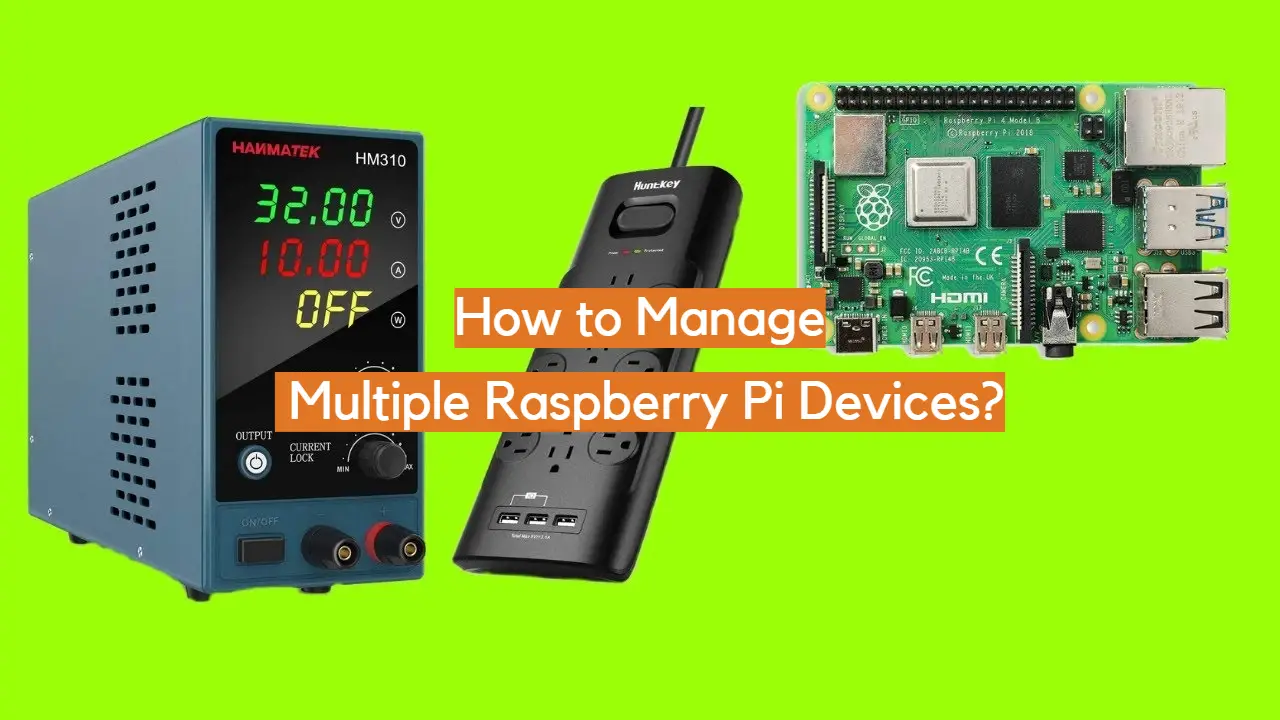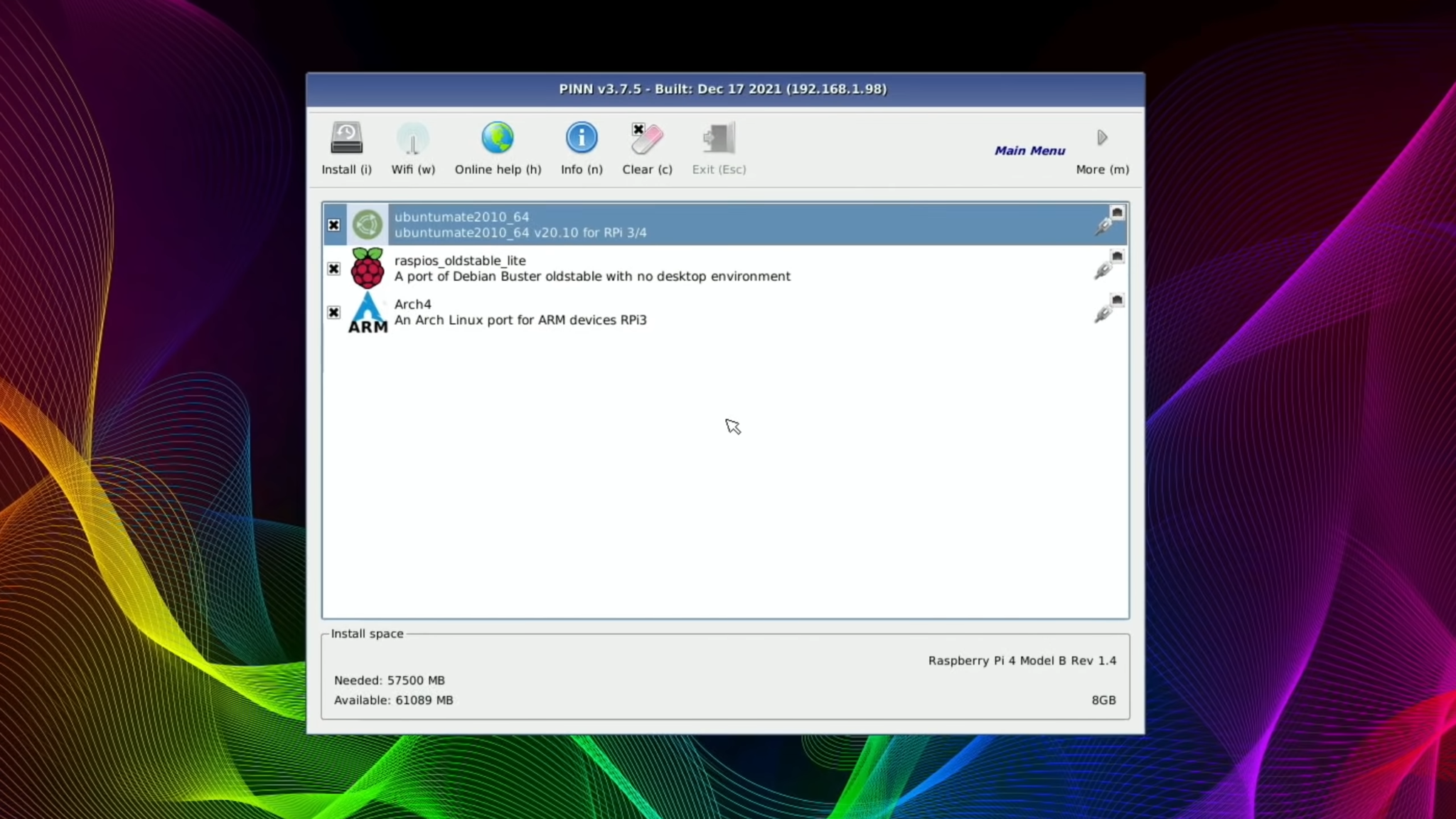Easy Guide: Manage Multiple Raspberry Pi Devices Like A Pro!
Ever felt like herding cats while trying to keep your Raspberry Pi army in line? Managing multiple Raspberry Pi devices is no longer a tech-headache thanks to innovative solutions that streamline deployment, updates, and overall maintenance! Whether you're orchestrating a smart home, a sprawling IoT network, or an educational lab brimming with possibilities, efficient management is paramount.
The surge in Raspberry Pi adoption across diverse sectors has fueled the demand for robust device management strategies. For instance, consider an information security officer overseeing a project that leverages multiple Raspberry Pis dispersed across a network. Or a company utilizing a fleet of these mini-computers to power smart screens displaying meeting room schedules across various facilities. These scenarios underscore the critical need for centralized control and streamlined maintenance.
| Topic | Information |
|---|---|
| Concept | Managing Multiple Raspberry Pi Devices |
| Challenges |
|
| Solutions |
|
| Use Cases |
|
| Key Benefits of Effective Management |
|
| Further Resources | Raspberry Pi Official Website |
One prevalent approach is leveraging a Raspberry Pi cluster. In essence, a cluster unites multiple Pi devices, enabling them to function as a cohesive computing unit. This setup is particularly beneficial for handling demanding tasks or distributing workloads across multiple nodes. A user with numerous Raspberry Pis scattered throughout their home and server room, for example, might find a cluster ideal for hosting various services and applications.
- Filmyfly 2025 Your Ultimate Hub For Gujarati Movie Downloads
- Filmyfly 2025 Sikandar The Ultimate Guide To Your Favorite Movie Download Hub
Imagine a home network where multiple Raspberry Pis are used to host a variety of services. One might run a Home Assistant instance, monitoring UPS devices via NUT servers. Another could serve as a Pi-hole for network-wide ad-blocking, while others manage homebridge or other smart home integrations. The challenge, however, lies in efficiently managing, updating, and maintaining this distributed infrastructure. Manually SSHing into each device for updates and maintenance quickly becomes tedious and time-consuming.
Recognizing this pain point, several solutions have emerged to streamline Raspberry Pi management. One option is to embrace cloud platforms like Amazon Web Services (AWS). AWS offers a suite of tools designed to simplify the management of Raspberry Pi devices, including cloud storage, content delivery networks (CDNs), and various other services. These tools facilitate project tracking and configuration management, enabling users to keep their devices organized and up-to-date.
A press release from March 27, 2024, highlighted Picockpit, a platform designed to manage multiple Raspberry Pi and Linux machines from a single interface. This tool simplifies software installation, updates, and command execution, providing a centralized dashboard for controlling your Raspberry Pi fleet. By utilizing a Raspberry Pi as a management hub, you can effectively monitor and control devices across a variety of networks, tailoring the setup to your specific needs.
- Movie Rulz In Kannada Your Ultimate Guide To The Kannada Film Universe
- Hd Movies Hub 4u Your Ultimate Destination For Topquality Entertainment
The flexibility inherent in Raspberry Pi allows users to craft custom solutions tailored to their specific requirements. Whether it's deploying remote sensors, managing industrial equipment, or orchestrating home automation systems, the ability to manage devices remotely is crucial. The best remote Raspberry Pi management platforms provide a centralized dashboard, allowing users to manage numerous devices simultaneously. This is particularly valuable for businesses and individuals deploying Raspberry Pi units in diverse locations.
As Raspberry Pi devices become increasingly commonplace, the need for effective device management solutions has intensified. A Raspberry Pi, a credit card-sized computer, can be used for a wide array of applications. However, managing a large number of these devices requires a strategic approach. Consider the scenario of configuring a fleet of Raspberry Pis running CentOS 7 for deployment across multiple customer networks, each operating under different and uncontrolled network conditions. This necessitates a robust remote management solution.
One example of ingenuity involves leveraging the Raspberry Pi 4's processing power and some Linux expertise to control multiple printers from a single device. The trick here is running separate instances of the printing software, each dedicated to a specific printer. This demonstrates the power of combining Raspberry Pi hardware with Linux's flexibility to achieve complex tasks.
Another approach involves containerization using tools like Docker and Portainer. Imagine using Portainer to manage four Raspberry Pis, adding each as an individual environment. While Portainer can manage multiple environments, configuring specific containers to run on particular Pis, especially when dealing with a mix of Pi 3s and Pi 4s, presents a challenge. The ideal solution would allow you to specify resource requirements and dependencies, ensuring that the appropriate containers run on the most suitable hardware.
Beyond these specific examples, several general strategies can be employed to manage multiple Raspberry Pis effectively. Consider a scenario where you have a mix of Raspberry Pi 3s and 4s and you want certain containers to run on specific Pis based on their hardware capabilities. One can install software, update, upgrade and run command easily.
Controlling multiple Raspberry Pi devices unlocks a powerful potential for scaling projects, automating tasks, and constructing intricate systems. Whether you're overseeing a network of IoT devices, orchestrating a server cluster, or constructing a distributed computing system, mastering this skill is essential for tech enthusiasts and professionals alike. The Raspberry Pi 3 B, as the newest version, brings enhanced capabilities to the table, rivaling traditional Linux machines in versatility.
For those grappling with the complexities of managing multiple Python installations, tools like Pyenv offer a streamlined solution. Pyenv facilitates the installation and management of multiple Python versions, allowing you to experiment with new versions without disrupting existing installations. This is particularly useful for projects with specific Python version dependencies or when you want to test new features in isolation.
The ability to manage multiple Raspberry Pi devices through a single interface is particularly advantageous for educational institutions and hobbyist projects involving multiple nodes. The best remote Raspberry Pi management platforms offer a centralized dashboard where users can manage multiple devices simultaneously. This is incredibly valuable for businesses or individuals who have deployed Raspberry Pi units in various locations, such as remote sensors, industrial equipment, or home automation systems. Centralized management reduces administrative overhead, improves security, and enables faster deployment times.
Effective management also enhances scalability. As your project grows, adding new Raspberry Pi devices to the network becomes easier and more efficient. Configuration management tools like Ansible and Chef can automate the process of provisioning new devices and ensuring they are configured correctly. These tools allow you to define the desired state of your devices and automatically enforce that state, reducing the risk of configuration drift and ensuring consistency across your Raspberry Pi fleet.
Moreover, remote management facilitates proactive monitoring and troubleshooting. By monitoring device health and performance metrics, you can identify potential issues before they impact your applications. Remote access tools allow you to diagnose and resolve problems without physically accessing the devices, saving time and resources. This is especially important for devices deployed in remote or difficult-to-reach locations.
In addition to cloud-based and centralized management platforms, custom scripts and automation can play a significant role in managing multiple Raspberry Pi devices. For example, you can write scripts to automate tasks such as software updates, system backups, and security audits. These scripts can be executed remotely using tools like SSH or Ansible, allowing you to manage your devices from a central location. By automating repetitive tasks, you can free up time to focus on more strategic initiatives.
The choice of management solution depends on several factors, including the size and complexity of your Raspberry Pi deployment, your technical expertise, and your budget. Cloud-based platforms offer a convenient and scalable solution for managing large numbers of devices, but they may incur ongoing costs. Configuration management tools are ideal for automating complex deployments, but they require some technical expertise to set up and configure. Custom scripts and automation provide the most flexibility, but they require programming skills.
Ultimately, the key to successful Raspberry Pi management is to choose a solution that meets your specific needs and fits your workflow. By implementing an effective management strategy, you can unlock the full potential of your Raspberry Pi devices and create innovative and impactful solutions. Whether you are building a smart home, deploying an IoT network, or creating a distributed computing system, effective device management is essential for achieving your goals. Remember to prioritize security, automate repetitive tasks, and monitor device health to ensure the reliability and performance of your Raspberry Pi infrastructure.
From Jithin Sanal via Hackster.io, the process to easily manage multiple Raspberry Pi and/or Linux machines together in one go; install software, update, upgrade and run commands can be done easily.
Or you may want to try the newest version without breaking your current installation. Luckily, some tools make managing multiple python installations a breeze, and this article discusses how to install and configure pyenv, which is one of them. Installing pyenv on a raspberry pi. Pyenv is a tool for installing and managing multiple python versions.
Leveraging the boosted processing power of the Raspberry Pi 4 and some good old fashioned linux trickery, [Jay] is now controlling multiple printers from a single device. The trick is to run
- Bingewatching Galore Unveiling Filmyfly Bollywood Movies Download
- Filmyfly Bollywood Hindi Dubbed Movies Your Ultimate Destination For Cinematic Bliss

How to Manage Multiple Raspberry Pi Devices? ElectronicsHacks

How to Manage Multiple Raspberry Pi Devices? ElectronicsHacks

How to Manage Multiple Raspberry Pi Devices? ElectronicsHacks